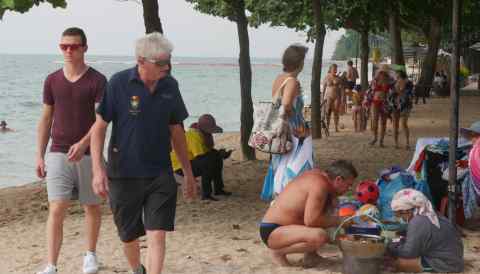LABUAN BAJO, Indonesia/PHI PHI, Thailand -- Finally getting to meet a Komodo dragon, the world's biggest lizard, was on the verge of becoming a much more costly proposition in January -- and that was causing huge anxiety to people living and working with the creature in the only place it is found, Indonesia's Sunda Islands.
"I thought no more international tourists would be coming to Labuan Bajo because of the price hike," Pascal, a 21-year-old head waiter who goes by one name, told Nikkei Asia. He works at a restaurant in a coastal town in East Nusa Tenggara Province, which is famous for diving and snorkeling and the gateway to Komodo National Park.












